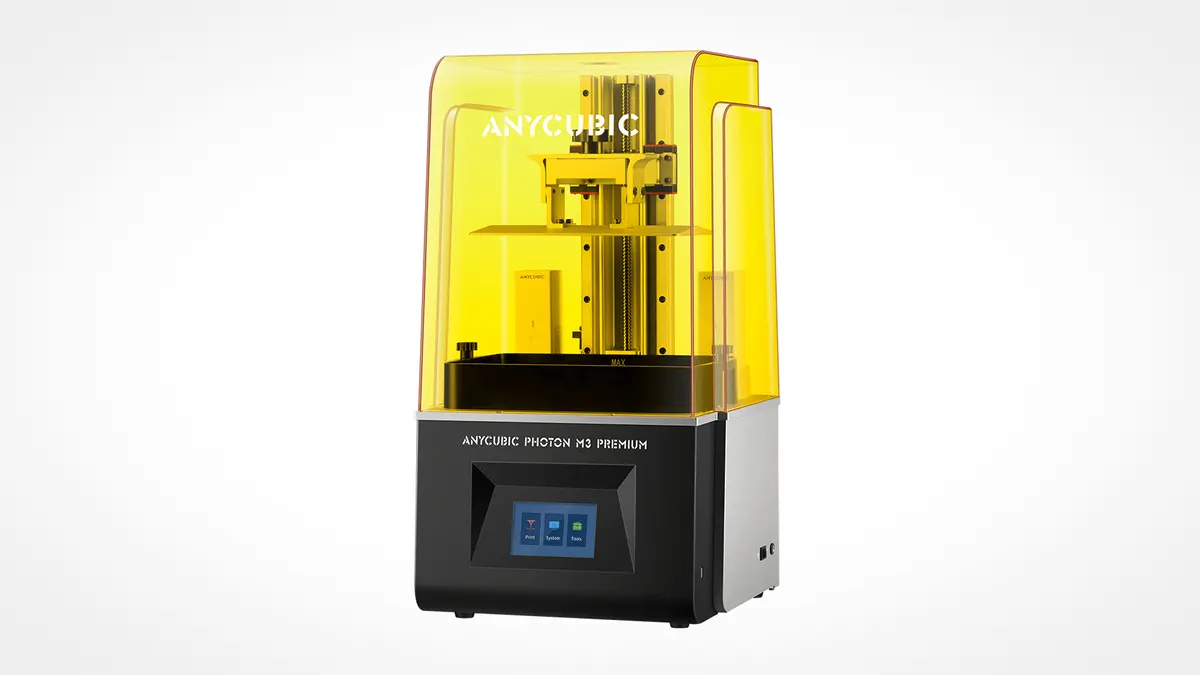Wow, there’s a lot of these Anycubic Photon machines now, aren’t there? We’re now up to ten of these resin 3D printers, to be exact, and picking one from that sort of selection might not be all that straightforward for some. Which of the Photons should you actually pick up? Well, we’re going to try and lend a hand there.
Anycubic’s Photon series of resin 3D printers has a pretty good rep, and they’ve often reviewed well with us here at the All3DP offices. We’re seeing increasingly more 3D printing manufacturers churning out multiple machines under the same name with very slight variations now, and the new ones aren’t always the better ones.
So, to try and help the average reader tell the difference between the machines in the flourishing Photon family, we’ve put together this buyer’s guide. Here, we’re going to compare all of the Anycubic Photon machines currently on the market (not including the ones Anycubic has told us are discontinued, of course). Hopefully, it’ll help you decide what exactly you should throw your money at. Let’s get on with it.
At a Glance
M3 Series
Anycubic’s M3 series is its third generation of resin printers, launched in 2022. The M stands for ‘Mono,’ short for monochrome screen (which all of these machines have), and the 3 represents the third generation. These are currently the most advanced printers in the Photon family, and another unreleased printer (the M3 Premium) will be launched sometime toward the end of 2022.
Anycubic Photon M3
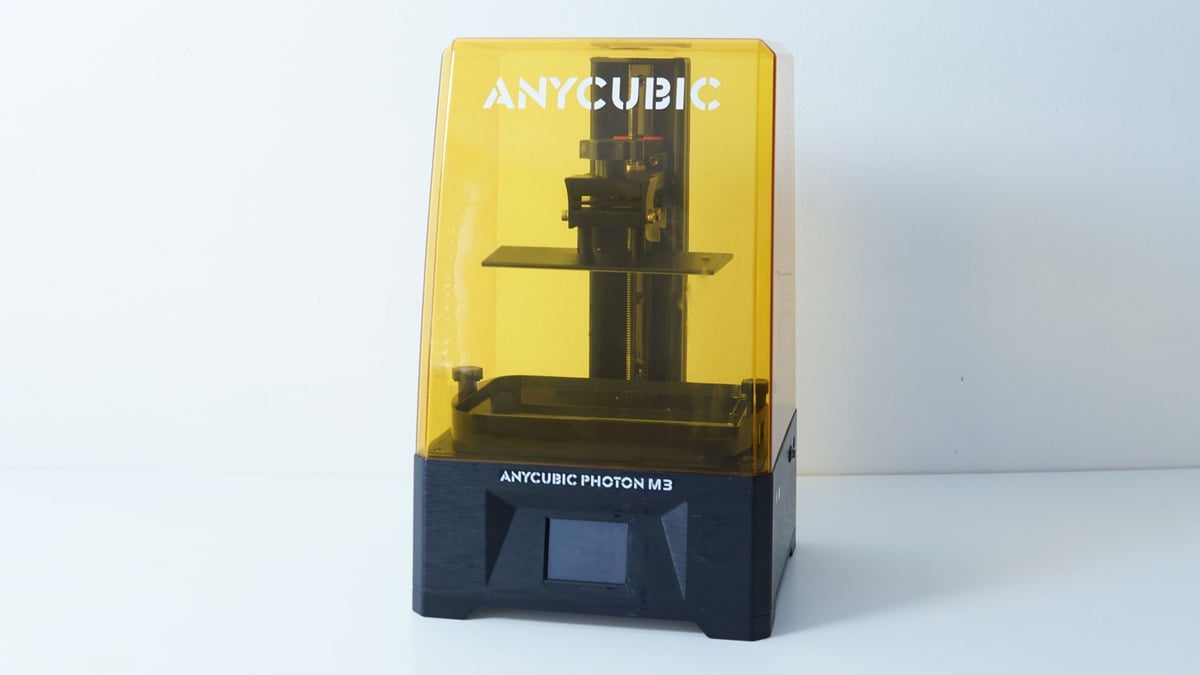
The Photon M3 is the smallest of the M3 series machines and is affordably priced, so you could think of this as an entry-level MSLA 3D printer. Its build volume of 163 x 102 x 180 mm is nothing to write home about in the grand scheme of things, but then again, most of its specs aren’t. This machine, perhaps more than any other in the Photon series, is about as vanilla as it gets, with average specs, size, and capabilities. Its 40-micron print resolution comes via its 7.6-inch 4K (4,098 x 2,560 pixels) LCD is also pretty average. Why?
This machine is simply meant as a solid, easy-to-use, dependable access point into resin 3D printing, that’s why. Only the softest of upgrades have been included in this one (a stronger guard rail, a higher resolution of LCD screen, and tweaks to the lamp and glass), and experienced resin users won’t really find anything here to get all too excited about.
Despite that, there’s more than a few reasons to be positive about this machine, and it reviewed well during its time in the All3DP print lab. But if you’re looking for something different or exciting, it’s probably not the one for you.

Anycubic Photon M3 Plus

The name gives away that the M3 Plus is like the M3, but a little bigger, right? But, there’s actually a bit more to it than that.
With a build volume of 197 x 122 x 245 mm, it is noticeably larger than the M3, particularly in the height department. It’s the additional clever features the M3 Plus comes with that really make it stand out against its smaller sibling, however.
The M3 Plus features an automatic resin refilling system, and the vat can be topped up by the printer as required. From what we know of the M3 Plus so far, this resin feeding system works with the company’s resin bottles, and caps onto them, creating positive pressure to pump resin into the vat. The system uses two metal prongs to detect the resin level and fill when needed. There have been a few reports of overfilling by users, so perhaps it doesn’t work perfectly, however.
Crucially, this larger volume printer has a 9.25-inch 6K (5,760 x 3,600 pixels) LCD screen that allows for a print resolution of 34 microns, so larger prints should show up some delightfully fine details.
We feel it’s also important to mention that there’s cloud software and an app that is meant to work with the M3 Plus to allow for remote printing. This software is not yet ready, but Anycubic tells us that it could be functional by the end of Q1 2023. Watch this space.

Anycubic Photon M3 Max

The M3 Max is the biggest and the most expensive offering in the Anycubic Photon family tree. At 298 x 164 x 300 mm worth of build volume, it’s pretty damn big, and for somewhere in the region of $1,000 it actually isn’t too expensive for its size.
Bigger resin printers haven’t always been good at producing small detail, historically, but the M3 Max offers a 46-micron print resolution thanks to its 13.6-inch 7K LCD, which is actually the average print resolution for many resin 3D printers, but on a much bigger scale. Being a larger printer, it will also use more resin, so it’s good to see the returning resin refilling feature from the M3 Plus is also fitted to the M3 Max. It didn’t let us down during our time spent with it, if anything, it was a little too generous with the resin.
We had a good time with the M3 Max, and felt it offered some seriously impressive printing performance, though we were left a little disappointed with its speeds. Still, a big printing space, with fine detail and a respectable price tag make it a good option for many.

The newest addition to the Photon M3 range is the $649 Photon M3 Premium, and it brings some interesting upgrades to the family.
You could see this machine as a racier version of the M3 Plus, and it certainly shares a similar build volume at 219 x 123 x 250 mm. A number of key differences mark this machine out, though, the biggest of which is the 10-inch 8K LCD screen. This pixel-packed display means that despite its large build volume, the print resolution is just 28.5 microns, so big prints and tiny details should be possible to produce.
That’s likely to be appealing to many people by itself, but Anycubic has also included a collection of other features that are also interesting as a bundle. There’s an upgraded cooling system in order to try and prolong the lifespan of the LCD, ball screw double-threaded rods that promise a 0.005 mm layer height and a printing speed of up to 95 mm/h, and the second generation of the new “LighTurbo” light source, which makes use of a curved reflector in order to try and produce more uniform light.
It’s certainly an intriguing package and one that we’ll be looking forward to getting out hands on sometime in the near future. It’s likely to prove strong competition for one of the very best resin printers currently going; the Elegoo Saturn 2.

Mono Series
Anycubic’s Mono series of machines really represents the second generation of resin printers produced by the brand. They use monochrome LCD screens (hence the name), which were a technological advancement on color screens that came before. Nowadays, almost every resin 3D printer uses a monochrome screen, and while the Mono range isn’t the latest generation, there’s still good value printers to be found within it.
Anycubic Photon Mono 4K
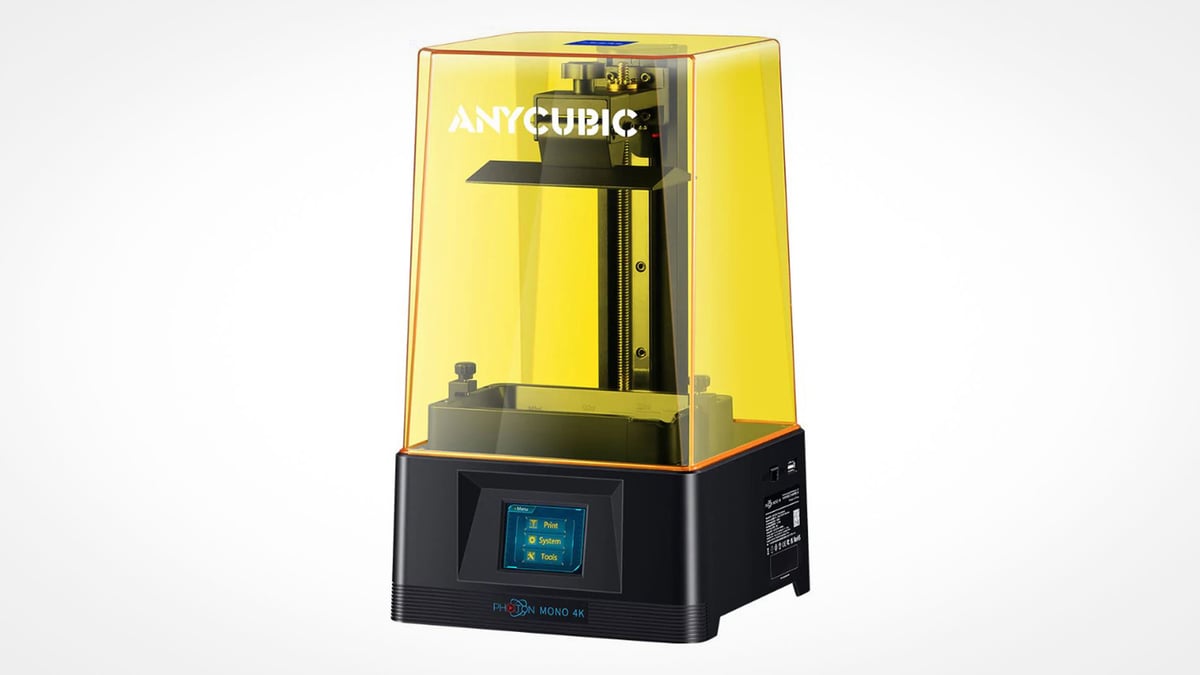
Equipped with a 6.23-inch 4K monochrome LCD, the Photon Mono 4K provides its users with an impressive print resolution of just 35 microns, allowing for some very fine details to be rendered.
It’s a pretty small resin printer, with a build volume of 132 x 80 x 165 mm, leaving it slightly smaller than the Photon M3, which is really this machine’s successor. Incremental size increases are often seen in successive generations of 3D printers. That size increase has left the M3 actually 5 microns down on the Mono 4K’s print resolution, though it is highly unlikely that anybody will notice, as a few microns isn’t visible to the human eye.
Originally launched in November 2021, the Photon Mono 4K can now often be found on sale in various 3D printing stores. Initially, it would have cost you $289, but pay attention, and you should be able to now pick one up for under $200. Considering the detail it’s possible to produce with a 35-micron print resolution, that’s a pretty attractive price.

Anycubic Photon Mono X
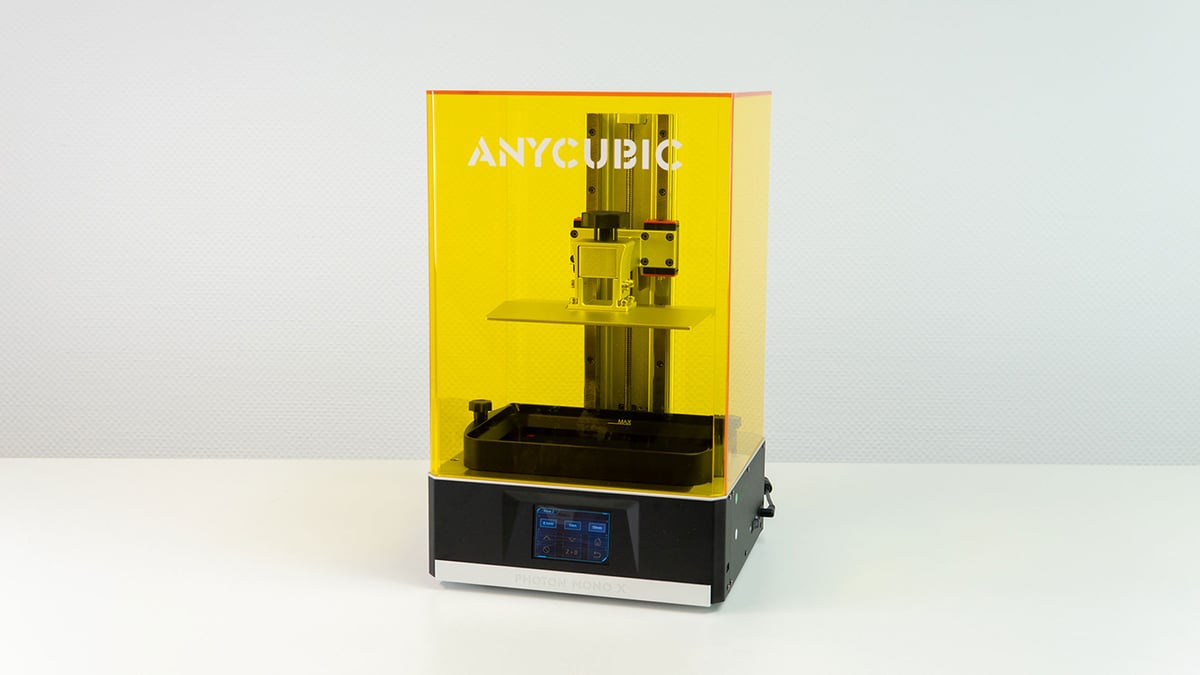
Upon its launch, the idea behind the Photon Mono X was big printing at quick speeds. It was equipped with a large 8.9-inch 4K monochrome LCD with 3,840 x 2,400 pixels, good for a print resolution of 50 microns.
At the time of its launch, the monochrome screen was a big step forward for resin printing, offering faster layer curing times and a longer lifespan. This combined with the larger build size of 192 x 120 x 245 mm, made the Mono X an exciting and fairly expensive resin printer upon its 2020 release. It was $759 upon its release, but in 2022, it’s not too difficult to find it for a comfortable number under $400.
Although now the Mono X is starting to look a little outdated with limited functions, it’s still a great way to get a larger 3D printer for a low price.

Learn more
Anycubic Photon Mono X2
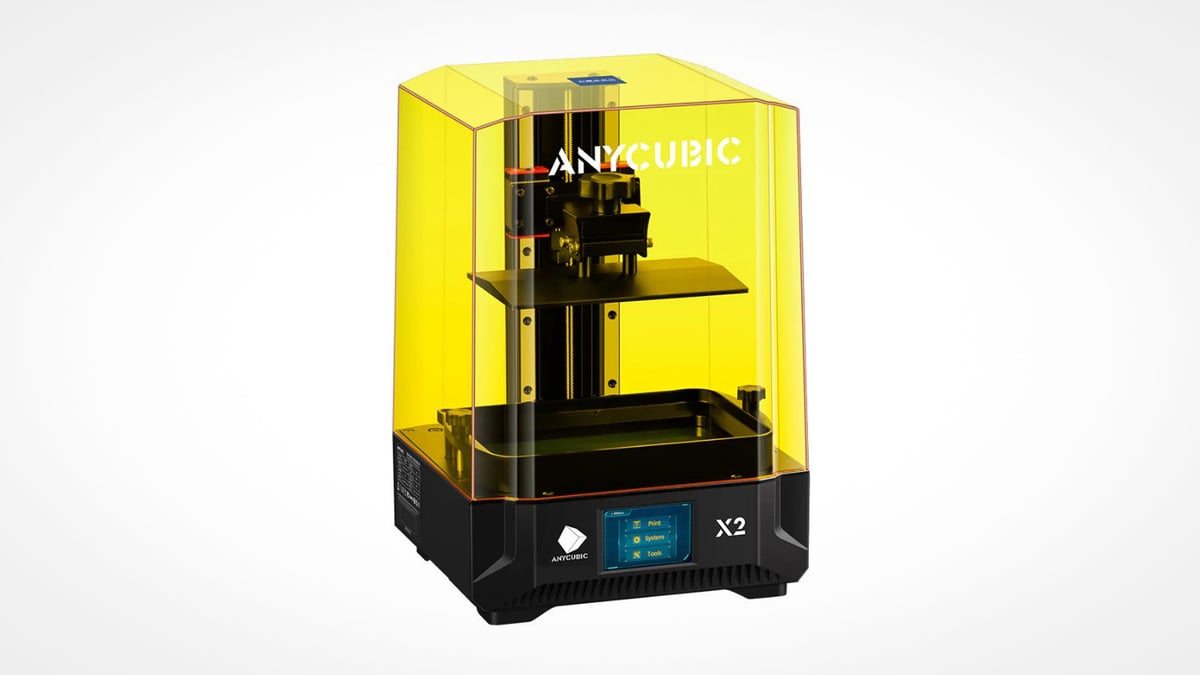
Released in the fall of 2022, the Anycubic Photon Mono X2 is a perplexing offering, considering other machines already offered in the Anycubic Photon range.
With the introduction of the M3 Plus, it was assumed the Mono X would last until stocks ran out, upon which it would be discontinued. However, Anycubic put out a new printer, the Mono X2, which appears to follow the Mono X. However, it has a 45 mm shorter build height than the Mono X, which leaves it looking poorly positioned against the M3 Plus, Mono X, and the Mono X 6K.
In terms of print details, it can print to an accuracy of 48 microns and has a 9.1-inch LCD packing 4,096 x 2,560 pixels. That gives it a pretty average print resolution, but the larger build area is welcomed, even if it is disappointing to lose some build height.
It does offer a slight improvement to width and depth by just 6 and 2 mm, respectively, as well as a laser engraved build plate, but for the time being, it’s difficult to understand the thinking behind this machine. At $429, it’s a little more expensive than the Mono X, but Anycubic has confirmed the Mono X is not to be discontinued for the time being.

Anycubic Photon Mono X 6K
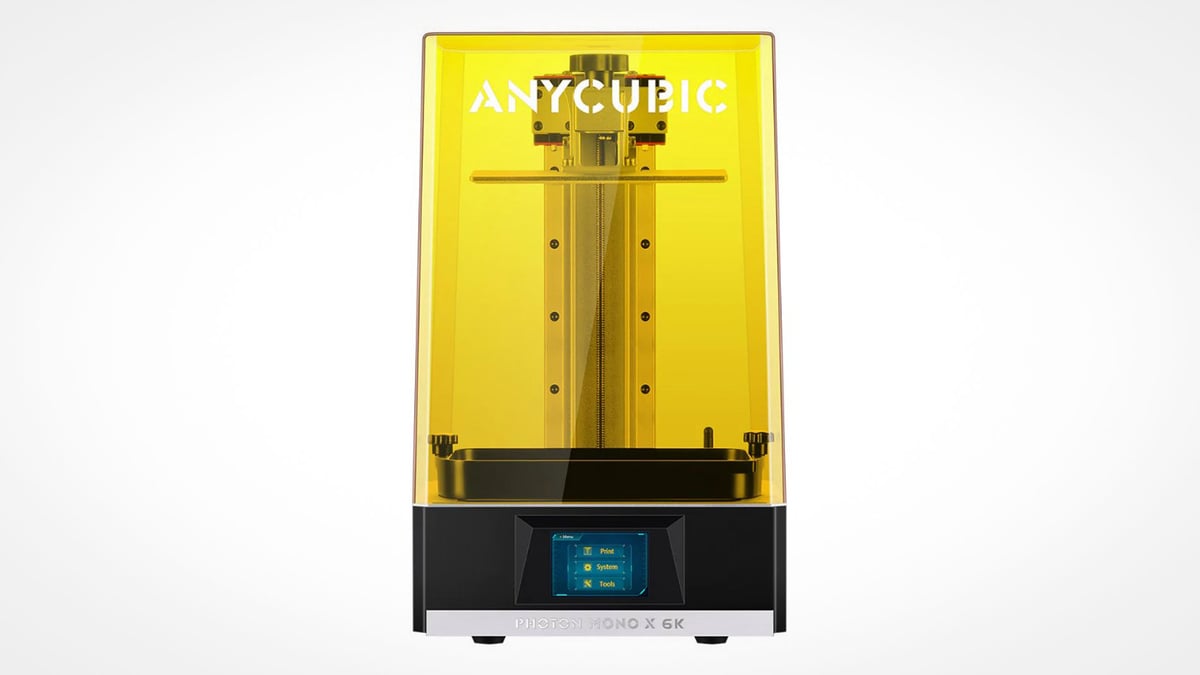
Anycubic dropped a 9.25-inch 6K resolution monochrome LCD into its already popular Mono X, and the result was an improved print resolution of 34 microns.
Crucially, it holds the same large print volume as the original Mono X and expands it by a couple of millimeters here and there to 197 x 122 x 245 mm. So, we’re talking pretty large prints at a very fine resolution with this particular machine. Other than that, the differences between the Mono X and this 6K version are very minor. The only key difference is perhaps the laser engraved build plate.
Normally, this machine is priced over $600, but it isn’t unusual to see it on offer We’d recommend keeping an eye on our deals page for that, at times you will see it for a touch under $500.

Anycubic Photon Mono SE
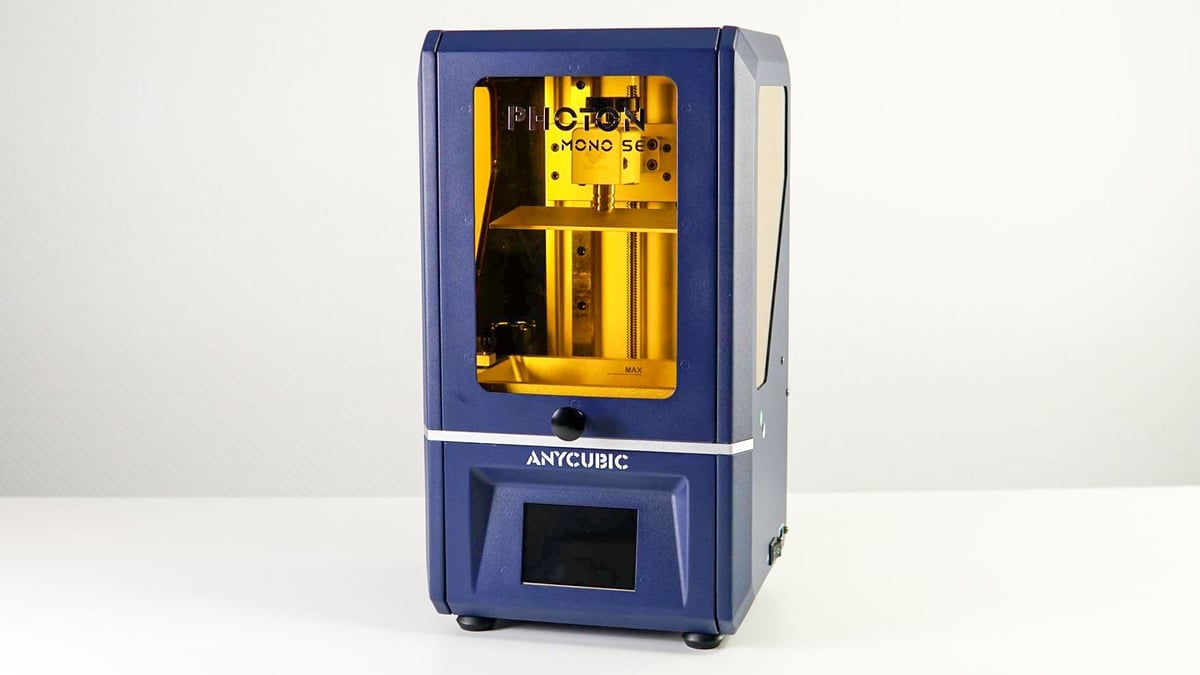
The SE is a bit of an odd one. It sports an exterior design different from any other of the machines on this list, but, having been launched in 2020, it’s now showing its age.
It has only a 6-inch 2K monochrome screen, good enough for a print resolution of 51 microns, but most modern resin 3D printers are now using 4K screens with marginally better resolutions. Its build volume of 130 x 78 x 160 mm is also a little on the smaller side in 2022.
This machine included carbon filtration, but it’s very difficult to say if it’s actually useful or not. If anything, it will likely only improve the smell of 3D printing, and it certainly won’t remove any harmful particles.
This is probably a machine that will soon be discontinued and is unlikely to be first on anybody’s shortlist in 2022, but because of that, you can probably find it going for a low price.
DLP Series
This isn’t really yet a fully-fledged series of the Anycubic Photon range, as it currently only consists of one machine. That machine is the Photon D2, and it’s special because it uses Digital Light Processing (DLP) technology instead of Masked Stereolithography (MSLA) which the rest of the Photon machines use. The D2 is Anycubic’s second DLP consumer resin 3D printer, and it remains to be seen if more will follow.
Anycubic Photon D2
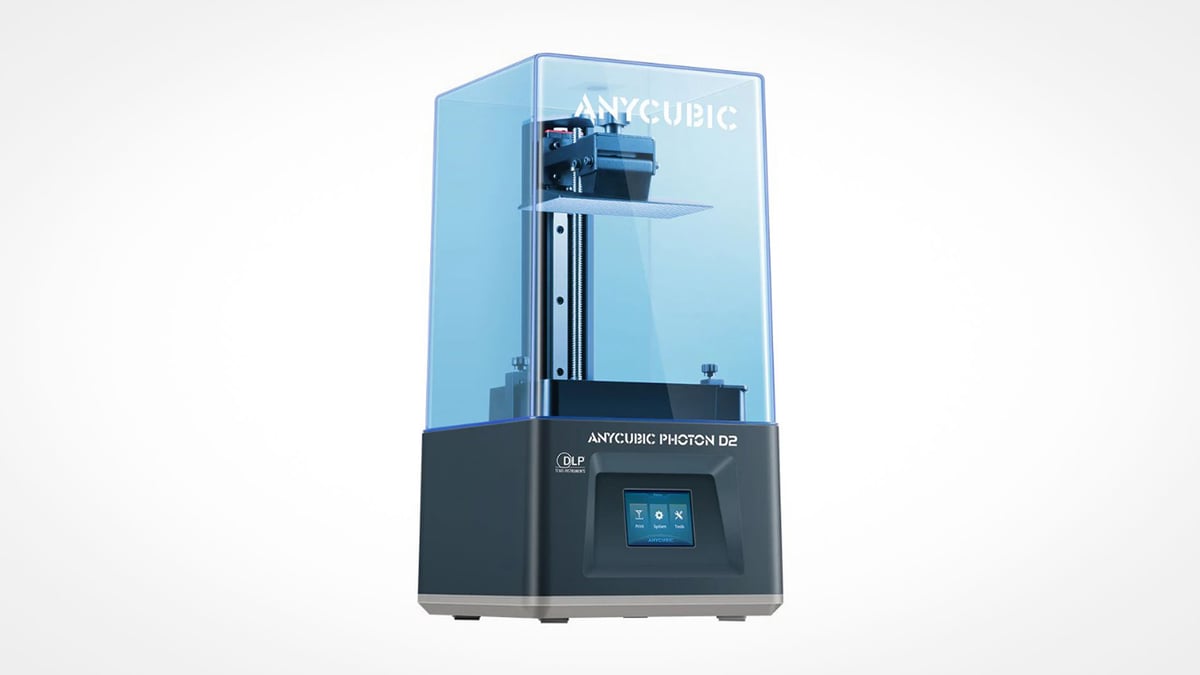
Produced in collaboration with Texas Instruments, the Anycubic Photon D2 followed the now-discontinued Photon Ultra. Both machines make use of DLP technology instead of the, in the consumer segment, far more common MSLA.
DLP uses a projector instead of an LCD screen, which is a more expensive technology to implement. Anycubic says it is worth it, though, claiming that it can go toe-to-toe with the printing performances of what is considered the resolution benchmark in contemporary consumer resin 3D printing: 8K equipped machines. An example of that is the Phrozen Sonic Mini 8K, which has a 22-micron print resolution.
The stats would have you believe it was inferior, though. It has a 2K projector, with voxels (the 3D equivalent of a pixel) arranged 2,560 x 1,440, and this gives a print resolution of just 51 microns. Due to how this technology works, and how the beam from the projector can be focused with a lens, though, it’s very difficult to compare it with LCD printers using MSLA technology purely through statistics.
Longevity is certainly a big appeal to DLP printing. The Photon D2 has a service life roughly ten times longer than that of a similar MSLA printer. You should see 20,000 hours out of this thing. After around 2,000 hours of uptime on a LCD screen, it’ll need replacing.
Its built volume isn’t the biggest at 131 x 73 x 165 mm, but when we tested it back in the summer of 2022, we were left seriously impressed with the details it was able to capture in prints.

Spec Comparison
Feature Breakdown
Monochrome LCD Screens
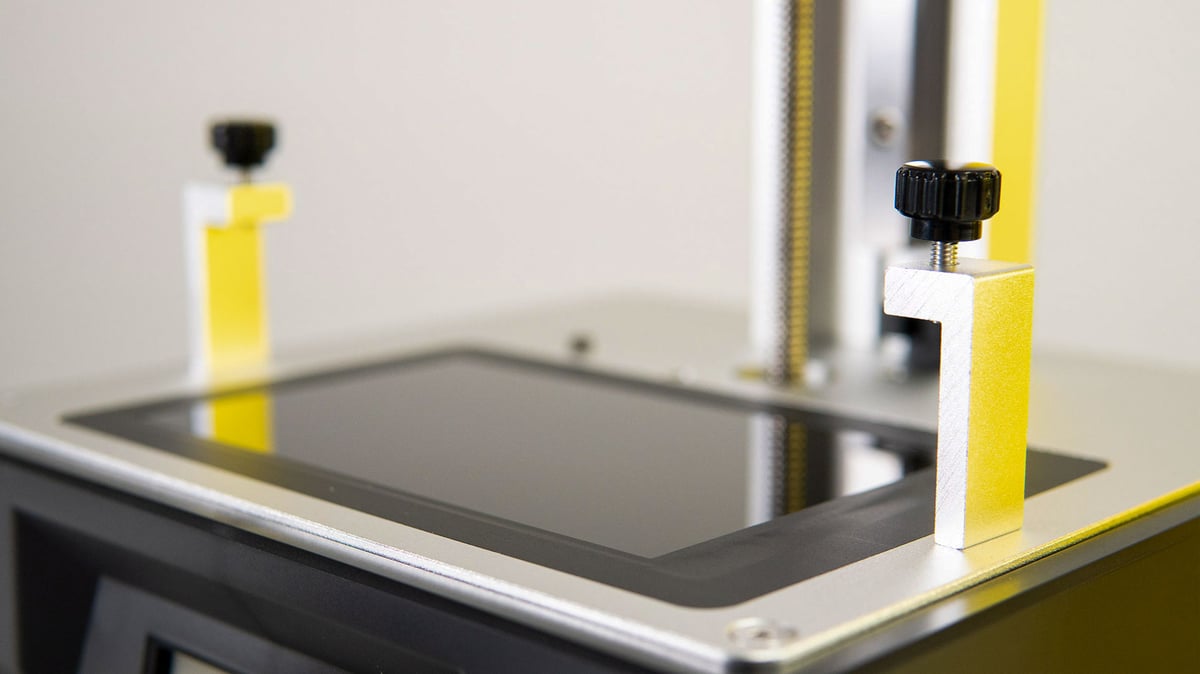
Gone are the days where many resin 3D printers utilizing MSLA technology would use color LCD screens, 3D printer manufacturers have now been wise to the advantages of monochrome LCDs for a while.
They offer improved longevity and can cure layers at greater speed, meaning users get a double-whammy of bonuses; prints are quicker, and you don’t have to replace the screen as often. The lifespan of a monochrome screen is actually around three to four times longer than that of a color screen, so it’s understandable nobody really uses the latter in 3D printing anymore. After about 2000h of lights on, you will have to replace it too, nonetheless.
On the Anycubic Photon machines there’s a range of LCDs being used. The key differentiator lies in the resolutions. A higher resolution screen will normally mean better print quality, which is reflected by print resolution, or “XY accuracy” in some cases. Manufacturers like Anycubic will, if they are going for maximum possible printing detail, attempt to pack as many pixels as possible into the X- and Y-axes of a defined space. Taking an example, the Photon machine with the lowest print resolution (and therefore the best) is the Mono 4K, which sports a 35-micron resolution.
The Mono 4K’s LCD screen is a 6.23-inch mono screen with 3,840 x 2,400 pixels, which across the X- and Y-axes measurements of 132 x 80 mm, gives the 35-micron print resolution.
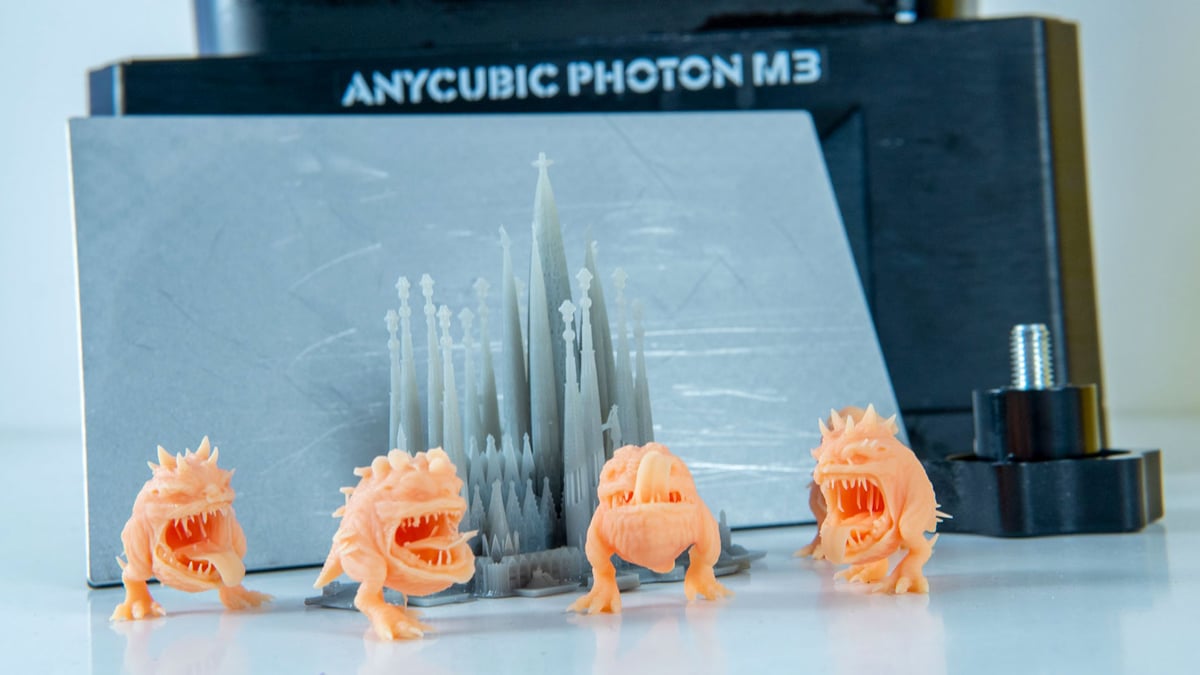
Obviously, different printers feature different sizes of LCD screens and have different print areas to cover, so print resolution can vary between models. As it’s one of the key aspects of a resin 3D printer, print resolution and LCD information are often front and center of desirable features and are easy to spot.
It’s worth pointing out here that microns are, for the most part, imperceptibly small measurements to the human eye. The width of a human hair is in the region of 70 microns, and a human red blood cell is just 8 microns in diameter. You’ve never seen a red blood cell, because the naked eye can only pick up, at the very best, something roughly 40 microns in size.
For that reason, it’s not worth worrying about the new Photon M3 having a “worse” print resolution than the older Photon Mono 4K. The M3 has more room to print within, and its 40-micron print resolution won’t leave you with prints looking any worse off.
So, how does this information relate to the outlier in the Photon family, the Photon D2? Well, it doesn’t. The Photon D2 does not have a monochrome LCD, and it works with a totally different technology called DLP (Digital Light Processing). That technology is an extremely rare sight in consumer 3D printing, but works by using a projector with a lens instead of an LCD screen.
It’s a 2K projector, meaning its voxels (the 3D equivalent of a pixel) are arranged 2,560 x 1,440, and the official print resolution of the Photon D2 is 51 microns. However, because of how this technology works and how the beam from the projector can be focused with a lens, you can’t really take that figure all too seriously. Essentially, on smaller prints, the lens can focus in and print objects sharper, whereas, on larger, zoomed-out models, you would be left with more granularity. Anycubic actually says the D2 can keep up with the likes of 8K LCD 3D printers when it comes to detail, and our testing showed that to be close to the truth. With such fundamental technological differences, you can’t compare the Photon D2 to the rest of its siblings in statistics alone.
Light Sources
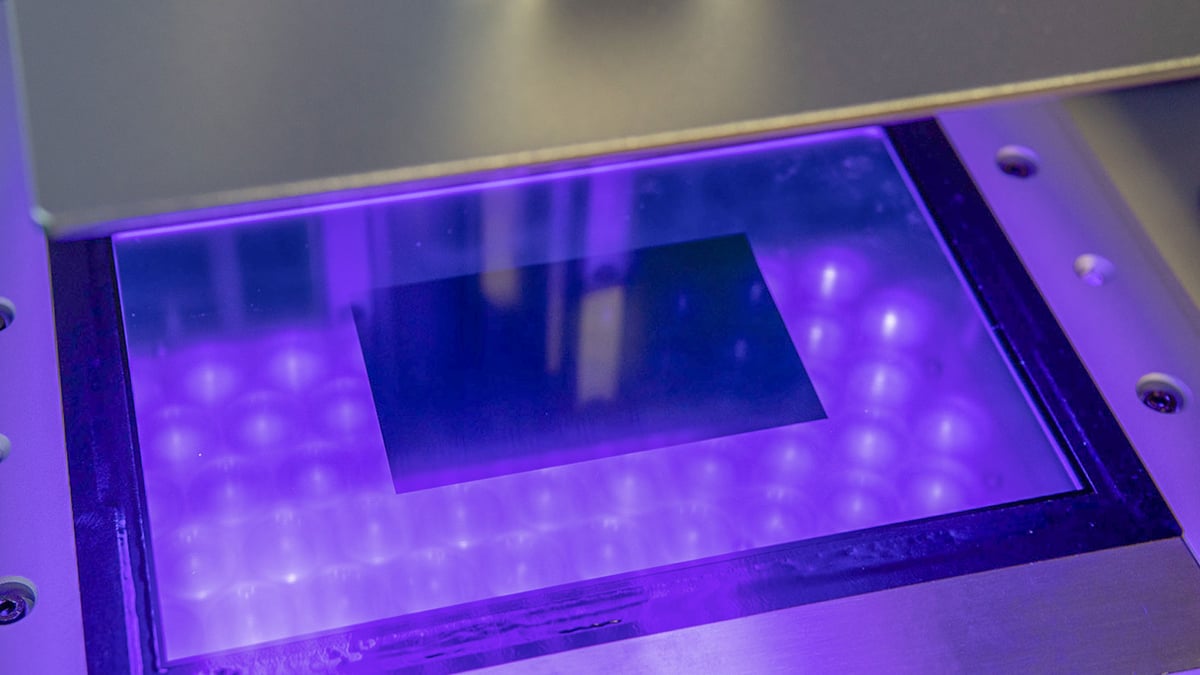
Light sources can be a bit of a trade secret in resin 3D printing, and manufacturers are often reluctant to reveal exactly what it is that makes their light sources special or unique. The result of that is you often see 3D printers marketed with slogans like “new, improved light source” but the substance isn’t really there. We know some things about the light sources in Anycubic’s Photon range, but we don’t know everything. And, that’s likely to be the case for most resin 3D printer manufacturers.
Once again, the Photon D2 is an outlier here so we’ll skip that machine for now and focus only on the rest of the range. The Photon range uses LED matrix light sources, which are made up of a collection of LED lights that differ in number depending on the machine.
The latest generation of Photon machines (the M3 series) utilizes what Anycubic says is a new light source system it has dubbed ‘Lighturbo.’
Details on what exactly makes it special are extremely limited, and Anycubic isn’t spilling many beans. What we know is what Anycubic claims, in this case, a more uniform UV-light transmittance, stronger light, and improved print speeds. In truth, we haven’t been able to detect big changes between the older Mono series and the newer M3 series, though we can’t rule out there being an improvement, especially over long term, which is something we can’t reliably test.
One clever feature of the Anycubic Photon machines is the ability to tweak the UV output from anywhere between 30-100%. This can be very useful for dealing with different resins and their varying responses to exposure, as well as potentially prolonging the lifespan of the LCD screen.
Build Plates
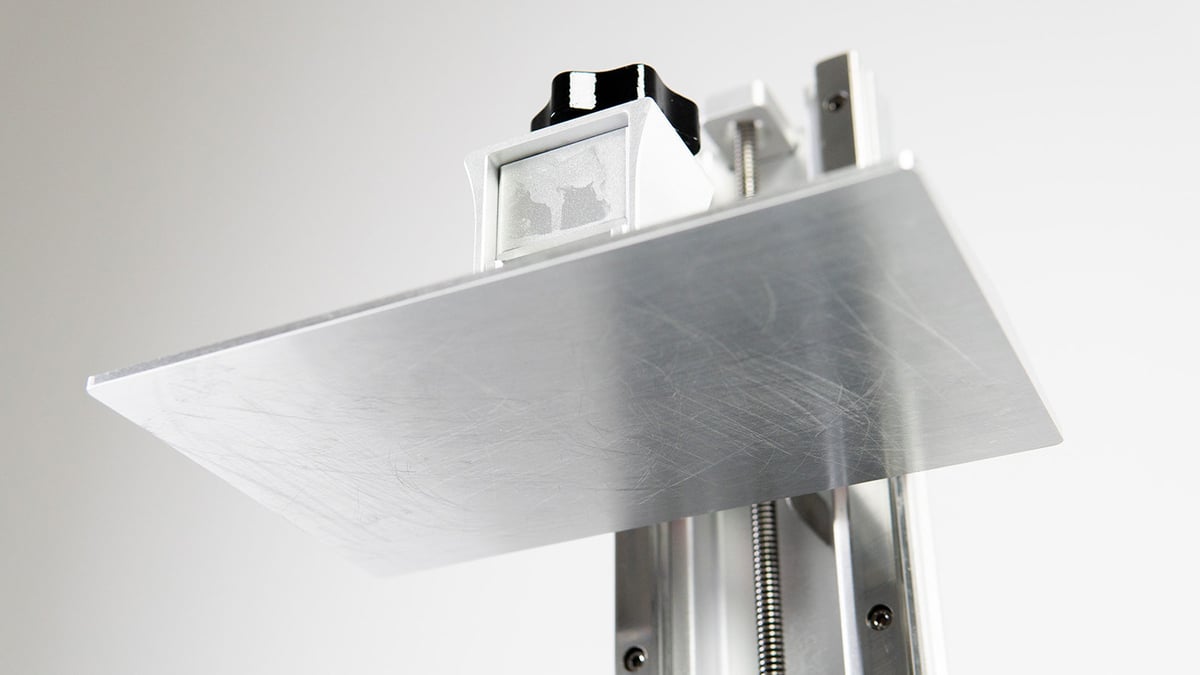
Only very subtle changes to the build plates of Anycubic Photon printers have been seen through the years.
Until recently, all Photon family machines made use of the same machined aluminum plate, which had a smooth surface. Really, there wasn’t much to it, but there wasn’t anything to complain about either. This surface provided good adhesion on a variety of machines in the Mono family.
When the M3 series was introduced in 2022, however, Anycubic switched to a laser engraved surface. The M3, M3 Plus, and M3 Max all use this surface, and it’s likely machines following in this family (such as the upcoming M3 Premium) will too.
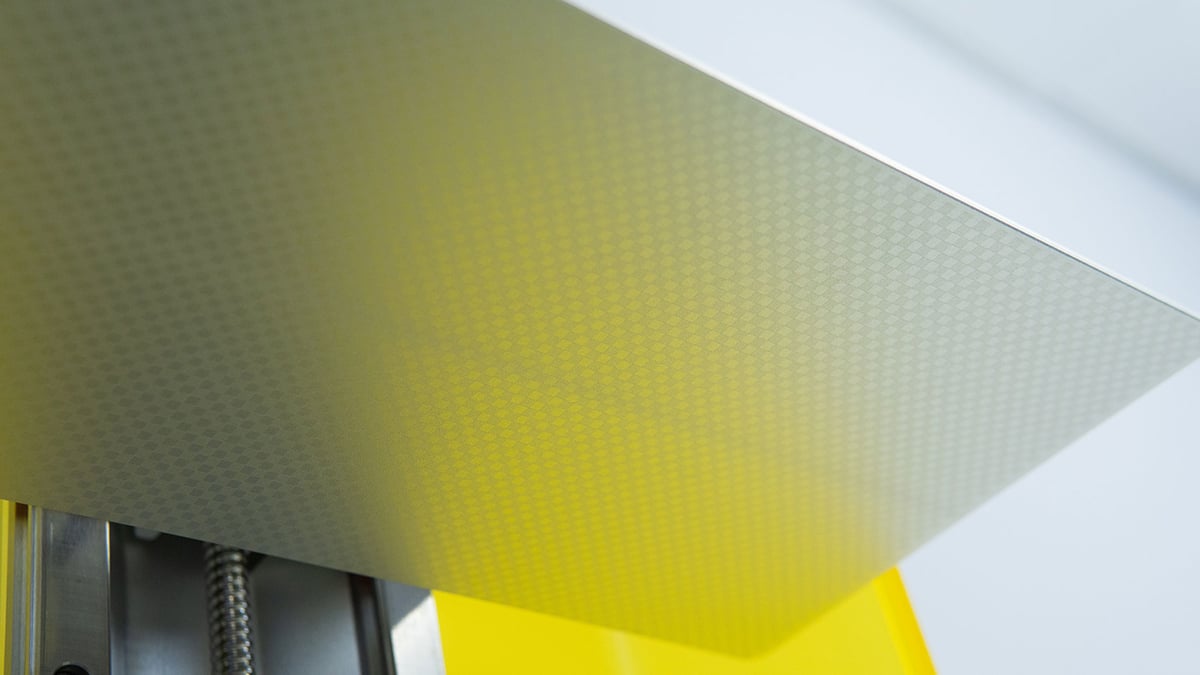
We’ve tested both the M3 and M3 Max and found the surface provides very good adhesion, but it can be tricky to say whether this is a significant step up from older machines and the smoother build plate surface. The M3 Max, in particular, is the largest Photon printer yet produced by Anycubic, so there’s no historical model to compare it with in terms of print weight and load.
It’s likely that users of any of the above machines will not find any significant issues with the stability of the plate and how well prints are adhering. In our experience, they all do a solid job.
UIs

Truth be told, the UIs of the Anycubic Photon range haven’t really changed all that much between generations. Even the discontinued Photons that aren’t mentioned in this list had a similar UI to what the latest M3 series machine possesses.
This is one of the weaker points of the Photon series machines, but it’s far from a disaster. The UIs provided across the board are a little bit too small in our book, which can make them occasionally tricky to read – especially if they’re stuffed inside a properly ventilated enclosure, which, as resin 3D printers, they ought to be.
At their smallest, you’ll have a UI of just 2.8-inches in size to poke at. The touchscreens tend to be fairly responsive and have simple menus, so you don’t press the wrong thing by mistake, but they look dated, and any UI you find yourself squinting at has already missed out on being good.
It’s an area where Anycubic could try and be a little more innovative with, given that it already tries to do this with many other features.
Photon Workshop
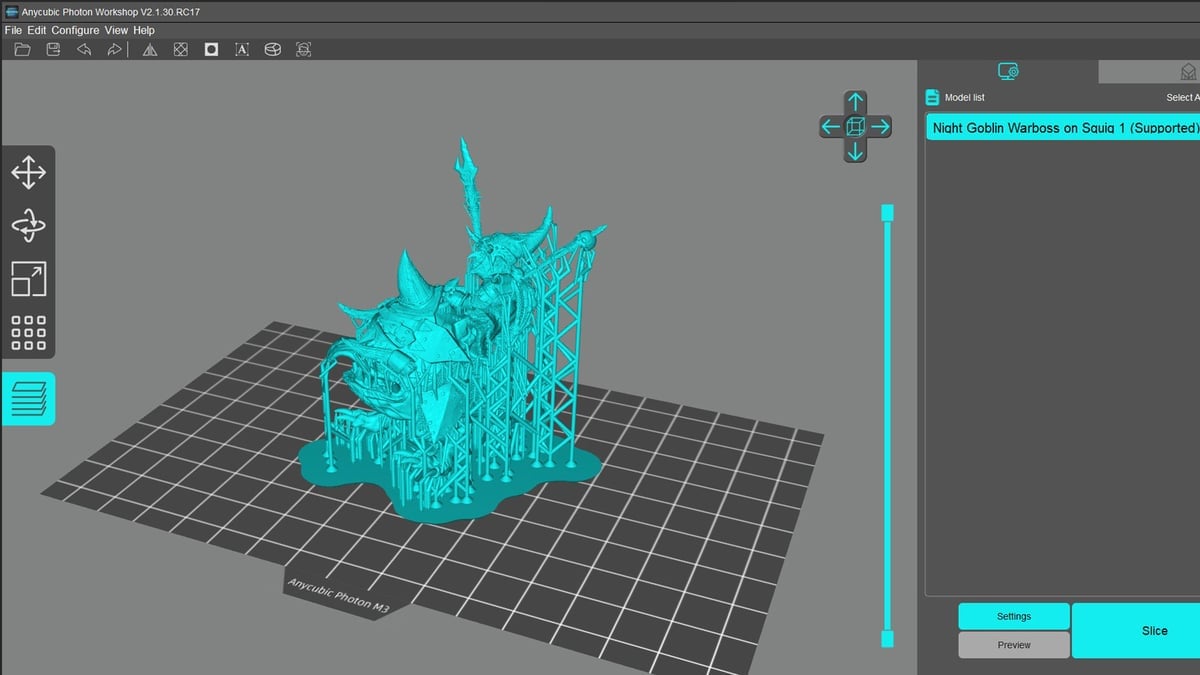
Anycubic has its own slicing software called Photon Workshop. It’s provided with every resin printer and downloadable from Anycubic’s website too, and although it isn’t the slickest, most up-to-date slicing software on the market, it’s a very solid place to start.
Beginners, in particular, are likely to use this slicer before any others, such as ChiTuBox or Lychee. If you don’t need to tweak with the more advanced settings and the intricacies of 3D printing software, then Photon Workshop could likely be all the slicer you will ever need.
If you’re new to resin 3D printing and have picked up a Photon machine, we do recommend giving Photon Workshop a go before delving into other slicers. It’s the best way to get printing quickly, and as long as you’re not printing very complex models, it should be perfectly adequate.
Alternatives
The Anycubic Photon series of resin printers encompasses a variety of sizes and price points, but we’ve picked out three machines here we think are viable alternatives to a Photon. For more recommendations, head on over to our Best Resin Printers of 2022.
Elegoo Saturn 2
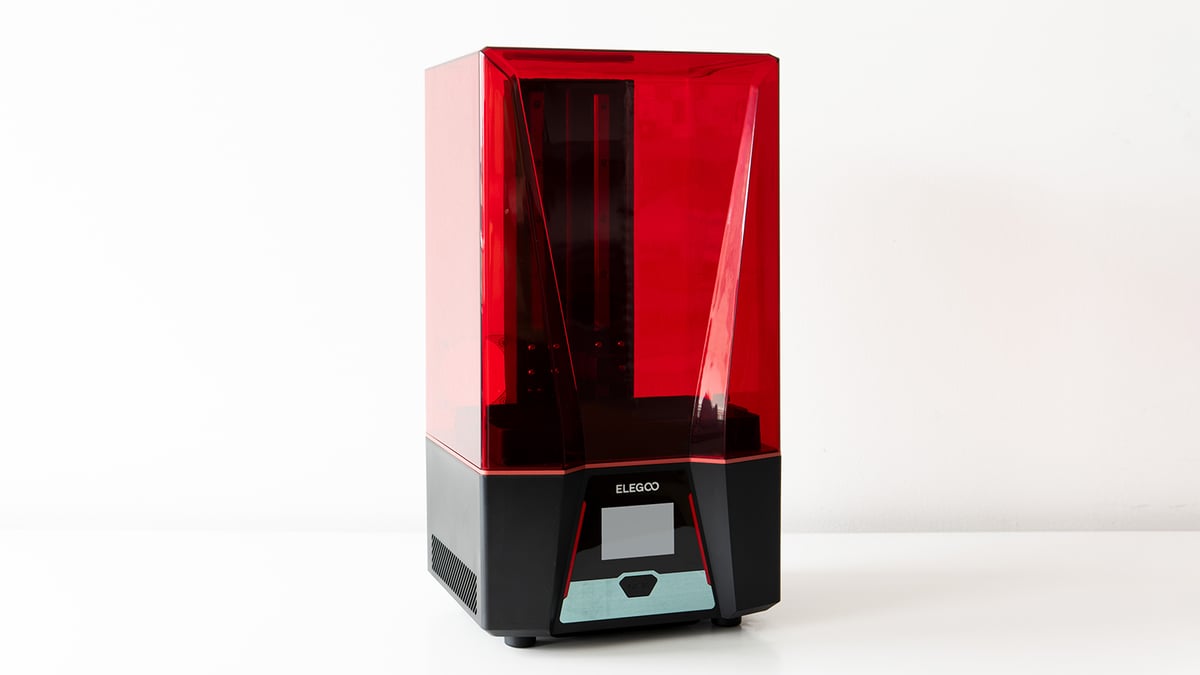
Mid-sized resin 3D printers – for the meantime, at least – don’t get any better than Elegoo’s Saturn 2.
This machine provides users with a formidable 219 x 123 x 250 mm build volume and a 10-inch 8K LCD screen with a print resolution of just 28.5 microns. That means large prints at a very high level of detail, and during our time testing this machine, that’s exactly what we got, it produced some of the coolest prints to grace the All3DP office to date.
Consider this machine as a very, very strong rival to the Anycubic M3 Plus from the list above.
Phrozen Sonic Mini 8K
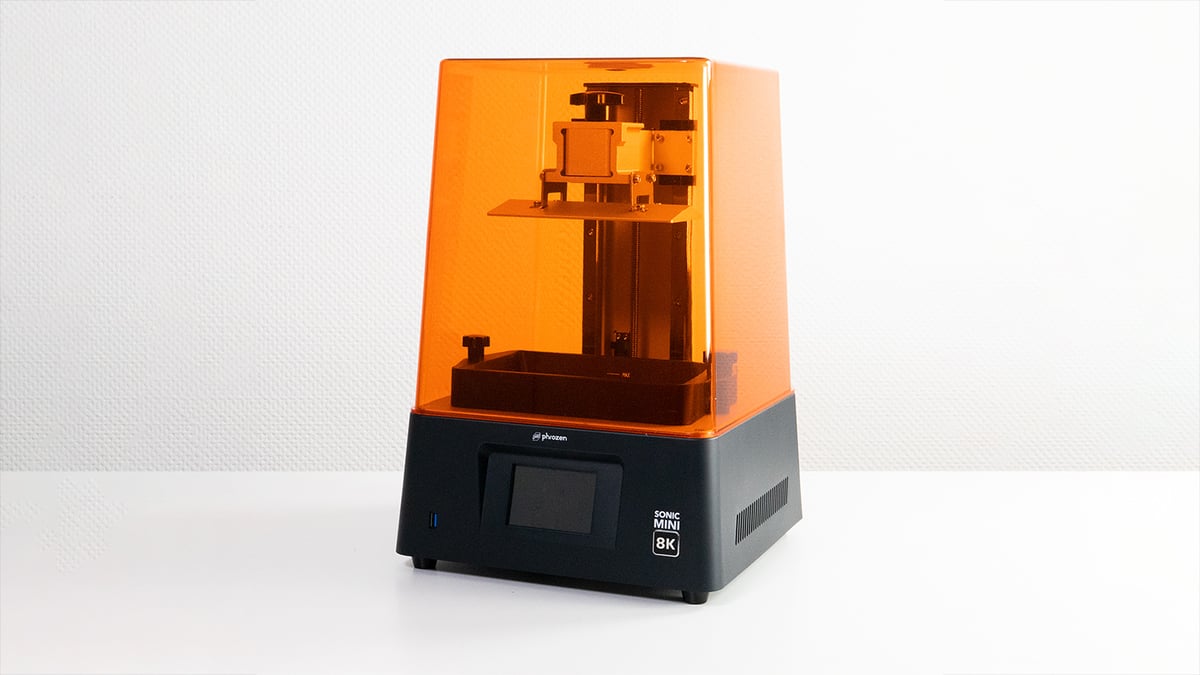
Although it isn’t the biggest printer in terms of build volume (165 x 72 x 180 mm), the Phrozen Sonic Mini 8K offers incredible printing details with its print resolution of just 22 microns. But, this machine is more than just its print resolution, as it improved on previous Sonic Mini machines that came before it.
Increased sturdiness from its dual linear rails for the Z-axis and print plate cantilever, plus a better resin vat design and fixtures, and print plate make it a significant step up from previous efforts from Phrozen.
If you want maximum detail and don’t need much build space, this could be a good pick, but it won’t come cheap, costing around the $600 mark.
Elegoo Mars 3
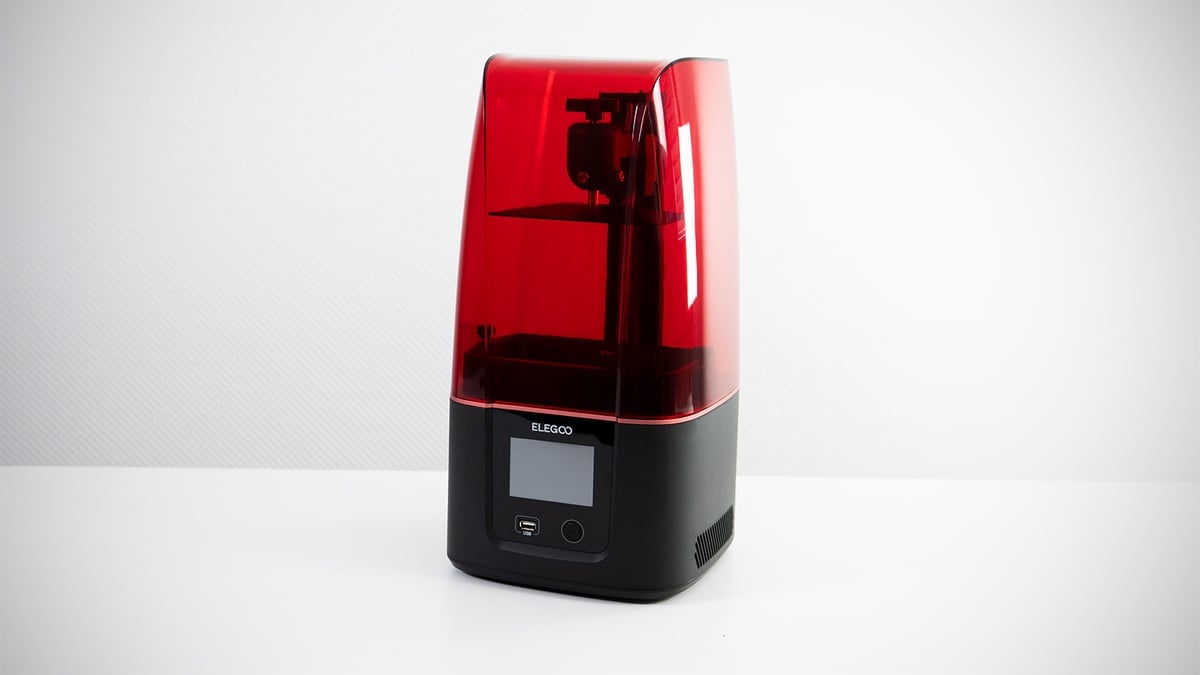
Elegoo is in strong form with its recent resin printer offerings, and we’d be a bit silly if we didn’t point you in the direction of the excellent Mars 3.
The third generation of the popular Mars, Elegoo stuffed the Mars 3 with some serious perks. Its 143 x 90 x 165 mm build volume isn’t the largest, but it’s respectable for what is really a small resin 3D printer, and in packing a 4K screen, the Mars 3 can print at an ultra-fine resolution of 35 microns.
It’s an easy to work with, unfussy, affordable resin printer with plenty of admirers. An easy recommendation for anyone new to 3D printing.
License: The text of "Anycubic Photon Series Buyer’s Guide: 10 Models Compared" by All3DP is licensed under a Creative Commons Attribution 4.0 International License.
CERTAIN CONTENT THAT APPEARS ON THIS SITE COMES FROM AMAZON. THIS CONTENT IS PROVIDED ‘AS IS’ AND IS SUBJECT TO CHANGE OR REMOVAL AT ANY TIME.




